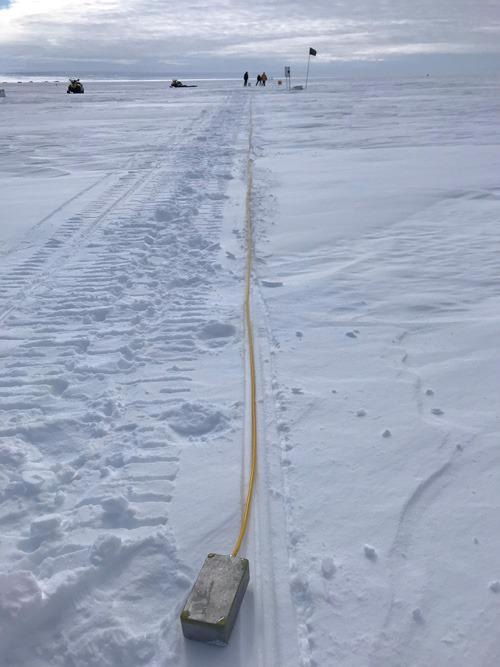Apr 26 2021
The 2021 Annual Meeting of the Seismological Society of America saw scientists describing how fiber optic cable is being used to detect minor earthquakes that take place in ice in the Antarctica region.
 Building a DAS system in Antarctica. Image Credit: Michael Kendall.
Building a DAS system in Antarctica. Image Credit: Michael Kendall.
The findings of the study could help gain better insights into the movement and distortion of the ice under varying climate conditions while enhancing future tracking of carbon capture and storage projects, stated Anna Stork, a geophysicist at Silixa Ltd.
Stork explained how she and her collaborators are tuning their techniques of distributed acoustic sensing (DAS) for microseismicity—earthquakes too feeble to be felt. DAS uses the small internal flaws inside an optical fiber as thousands of seismic sensors to work.
At one end, an instrument transmits laser pulses down the cable and quantifies the “echo” of each pulse when it is reflected off from the internal flaws of the fiber.
When the fiber is disturbed by icequakes or earthquakes, there are variations in the size, phase, and frequency of laser light that is scattered back to the DAS receiver that can be utilized to describe the seismic event.
From the University of Oxford, Michael Kendall stated that the Antarctic research illustrates how DAS can be utilized to track underground carbon capture and storage at other sites across the globe. For example, the layout of the Antarctic network is a good example of how a comparable network could be designed to optimally detect microseismicity activated by carbon storage.
Our work also demonstrates a method of using DAS fiber arrays to investigate microseismic earthquake source mechanisms in more detail than conventional geophones. If we can analyze the source mechanism—how an earthquake fails or fractures—then we may be able to attribute the earthquake to the movement of fluids like carbon dioxide in a reservoir.
Tom Hudson, University of Oxford
Hudson explained that the Antarctic microseismic icequakes recorded by DAS “are around magnitude -1, equivalent to roughly the size of a book falling off a table, so they are very small earthquakes.”
The research performed by Hudson and his collaborators is the first work to employ DAS to analyze icequakes in Antarctica. The fiber optic cable was installed at the Rutford Ice Stream in a triangular and linear configuration on the ice surface present.
According to Kendall, there are numerous challenges to utilizing fiber optic sensors in the rough environments in Antarctica. The equipment had to be shipped in pieces by boat and numerous planes to the study site. The fiber was buried by the researchers to decrease wind noise hindering the seismic signal, as well as to eliminate the signal of a generator that drove the DAS instrument.
We housed the instrument in a mountaineering tent, which basically served as a tiny office. Keeping temperatures within the recommended operating limits was a challenge. The radiative heating from the sun warned the tent to well in the 30s [degrees Celsius], even though it was −10 degrees Celsius outside.
Anna Stork, Geophysicist, Silixa Ltd
According to Kendall, the team shares its investigations of icequake data with climatologists and other scientists who are studying the slip of glaciers and other ice movements in Antarctica.
Hopefully in the future we will interact more with scientists drilling ice cores too, as they use fiber as distributed temperature sensors, but these fibers that they put down boreholes could also be used for seismic studies like ours.
Michael Kendall, University of Oxford